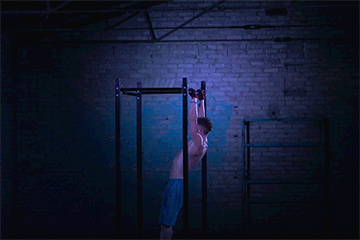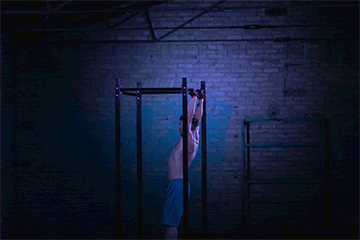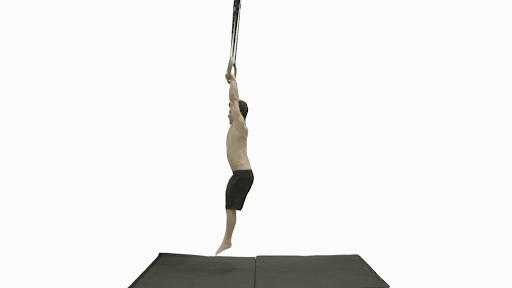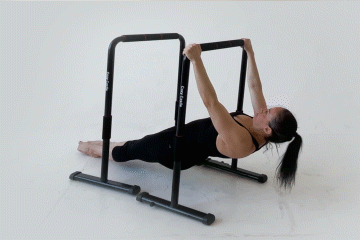There are a lot of different opinions on Kipping vs Strict Pull-ups. Some people think that the kipping ones are a waste of time, while others believe that they are an essential part of training, especially in CrossFit.
So, which one is the right pull-up technique? And more importantly, do you need to do both kipping and strict pull-ups to see results?🤔
In this article, we will discuss the pros and cons of kipping vs strict pull-ups and help you decide which one is right for you!
Don’t worry.☝️ We’re not here to bash kipping pull-ups. It’s not inherently wrong within the proper context. It’s a challenging exercise that still develops certain aspects of fitness (or specific discipline) that we will explore in this article.👇
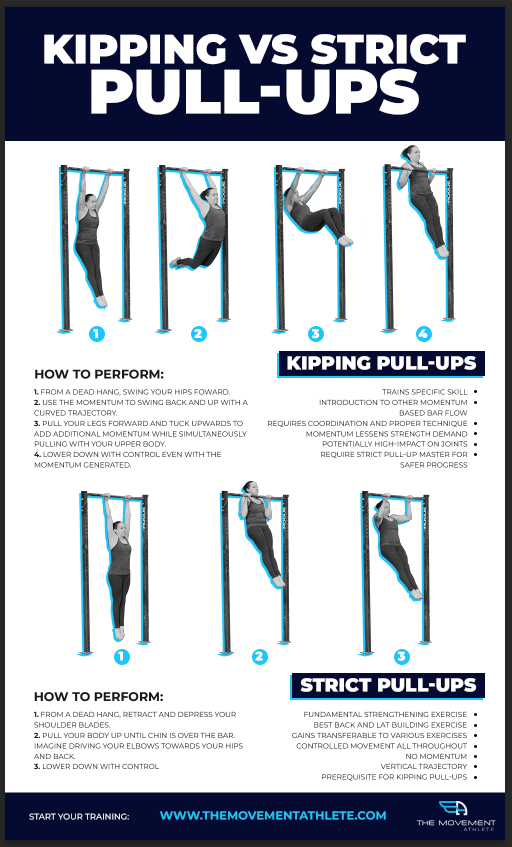
What’s the main difference between kipping and strict pull-ups?
📸 https://www.instagram.com/p/Ca4wnLrqOkB/
When it comes to developing an amazing posterior chain (back muscles) 💪 and biceps, the pull-up progression is one of the most effective and popular exercises to do the job.
When it comes to pull-up technique and form, there are two main types: kipping and strict.
Notice that the upper body is the only one facilitating the movement for the pull-up.
🙌The strict pull-up is a simple, yet mechanically challenging exercise that everyone should have to achieve a strong, healthy foundation of strength. It’s one of the best exercises for building muscle and strength with bodyweight alone.
🔎To perform, begin in a dead hang position then pull your whole body up until your chin is over the bar with the pure strength of your latissimus dorsi: the prime mover of the movement pattern. The next phase is lowering down with control while keeping an engaged core throughout the movement pattern. The rhomboids, biceps, and scapula assist also in the movement and stabilization of the joints.
More of how to perform the pull-up and its progression here:📍 The Ultimate Guide to Pull-ups
The lower body motion produces force to lessen the burden on the upper body to complete the pull-up motion. There are a few variations for the leg movement.
Kipping pull-ups are more explosive and use momentum to help you get up over the bar. The kip uses the momentum from a swing of the hips and lower body. The generated force helps you easily shoot over the bar even when lacking the basic strength to perform a strict pull-up.
With kipping pull-ups, you don’t necessarily need to have the basic foundational strength of strict pull-ups to execute the movement. Research shows that it increases the lower body activation, but lowers the upper body activation.
However, it does require timing, coordination, and mastery of the movement pathway to perform it correctly.
Why kipping pull-ups getting so much hate?🧐
The kip (or the use of momentum) is often seen as “cheating” by those who can’t do a strict pull-up. It looks like you’re not doing the “work”, but in reality, kipping pull-ups are harder than they look.
Kipping pull-ups also get a lot of hate because people associate them with CrossFit. This is quite unfair since CrossFit and the people enjoying the sport usually get generalized and attached with a negative connotation.
THERE ARE GOOD CROSSFIT COACHES AND PRACTITIONERS and there are also bad ones JUST LIKE in the calisthenics community.🤸🏡
Who should do kipping pull-ups?👊
Gymnasts use the kip to help get to the top support position in still rings events.
Going back to the kipping pull-ups… So who is it for?
When looking at its form, the force generated helps you complete the movement much easier in terms of muscle recruitment and engagement. The explosive nature of the movement is a perfect transition to other dynamic bars (or ring) skills. A common move used with kipping pull-ups is the muscle-up.
Not only CrossFit athletes, but gymnasts, acrobats, and freestyle calisthenics athletes can get value from the kip to easily move other advanced skills.
Athletes who use the kip use the momentum from the hip and legs so they can pass through the pull-up with less back strength. This isn’t necessarily a bad thing. Strength and muscle development isn’t always the main goal in training.😲
For those interested in learning a specialized skill such as the kipping pull-up, then there’s no reason for you NOT to train it.
Who should NOT use it?🤔🤔
Beginners are better off developing horizontal pulling strength for pull-ups.
✊If you’re someone who’s interested in building back strength and muscle, then kipping pull-ups aren’t the best choice of technique for you.
That’s the main reason why many people (especially calisthenics purists) put too much hate on the kip. It’s used OUT OF CONTEXT.
When performing STRICT pull-ups to BUILD MUSCLE and STRENGTH, kipping is a huge mistake that beginners need to avoid. More on pull-ups mistakes here:📍 11 Dumbest Pull-ups Mistakes
Adding a kip defeats the purpose of a strict pull-up. There’s less back muscle activation, less time under tension, and different movement pattern.
Kipping pull-up IS NOT part of the pull-up progression. Adding momentum isn’t a way to make the exercise progressive for building up your back.
We highly recommend mastering the STRICT pull-ups FIRST before moving towards the kipping pull-up for two main reasons:
- 🎯 Strict pull-ups better prepare your muscles and joints for the explosive demands of the kip.
- 🎯 It’s better to first develop the necessary strength and mobility first with the strict variation because it is SAFER in execution.
Why beginners should stick to STRICT Pull-ups😱😱
🤜 Kipping pull-ups let you perform the movement with less strength than strict ones, which could be tempting for beginners.
HOWEVER, the downward motion of the pull-up could potentially be too demanding if a beginner doesn’t have the necessary strength and joint stability to handle the loading.
Putting a high demand on the scapula during the descent from a kipping pull-up increases the risk of injury, especially if individuals performing it doesn’t meet the prerequisite of the exercise.🤕🤕
Mastering the strict pull-ups ensures that you have the necessary strength and mobility to handle the movement. Plus, it makes learning kipping pull-ups so much faster. If you’ve already gotten strict pull-ups, then it will be all about coordination.💯
Which pull-up is better?🤨🤨
Now to answer the big question… You might probably hate this and the answer is… IT DEPENDS.✔️
Neither is a better exercise because it will depend on the context.
If you’re interested in building strength and muscle for your back, then strict pull-ups would be the better option.
If you’re interested in building the skill to perform more kipping pull-ups for a CrossFit event or to learn transitions for calisthenics skills, then kipping would be your best friend.🫂
It’s also not a bad idea to combine both exercises into your workout. This way, you get the best of both worlds (If you already have a good number of strict pull-ups, that is). Complete your strict pull-ups, then end with a set of kipping to master the coordination of the movement pathway.
The pull-up is a calisthenics fundamental that everybody SHOULD have. It displays a good amount of upper body strength and mobility which has a great impact on movement performance in a workout setting AND in everyday movements.
If you’re still having a hard time performing pull-ups, then a PERSONALIZED and ADAPTIVE calisthenics training program is the best way to proceed with your journey.😍
Begin your journey in a progressive and personalised way by taking a short assessment of your body’s strengths and weaknesses. Taking the assessment lets you know what you need to work on so you can address the issue, and be able to FINALLY GET YOUR FIRST STRICT PULL-UP!
TAKE THE ASSESSMENT NOW!

